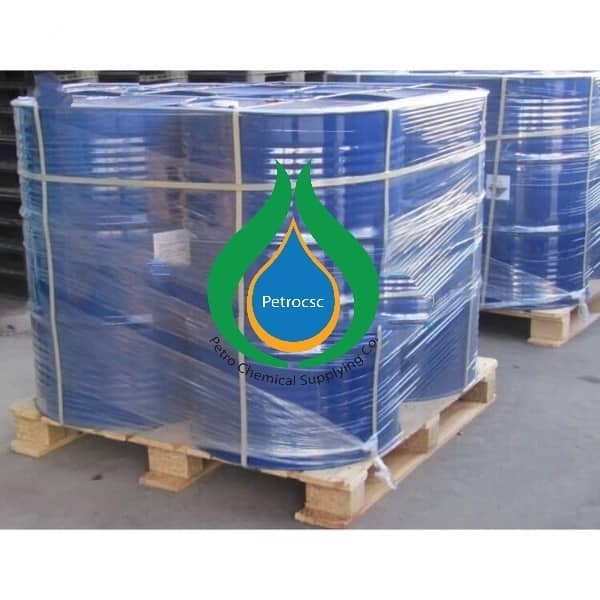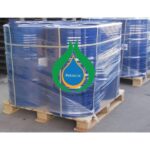Process Advantages of Direct CO2 to Methanol Synthesis
Carbon Recycling International, Kópavogur, Iceland
Developing a laboratory scale or pilot scale chemical process into industrial scale is not trivial. The direct conversion of CO2 to methanol, and concomitant production of hydrogen from water electrolysis on large scale, are no exception. However, when successful, there are certain benefits to this process over the conventional process for producing methanol, both economic and environmental. In this article, we highlight some aspects that are unique to the process of converting pure CO2 to methanol. Starting from pure CO2 and a separate pure source of H2, rather than a mixture of CO, CO2, and H2 as is the case with syngas, simplifies the chemistry, and therefore also changes the reaction and purification processes from conventional methanol producing industrial plants. At the core of the advantages is that the reaction impurities are essentially limited to only water and dissolved CO2 in the crude methanol. In this paper we focus on several aspects of the process that direct conversion of CO2 to methanol enjoys over existing methods from conventional syngas. In particular, we discuss processes for removing CO2 from a methanol synthesis intermediate product stream by way of a stripper unit in an overhead stream of a distillation column, as well as aspects of a split tower design for the distillation column with an integrated vapo-condenser and optionally also featuring mechanical vapor re-compression. Lastly, we highlight some differences in reactor design for the present system over those used in conventional plants.
Introduction
The carbon captured in the deposits of fossilized vegetation, along with ancient marine life, degraded and stored in the earth’s crust, have been pivotal to human population growth and development, and indeed, have become essential to our existence (Richardson et al., 2011). Not only are these deposits finite, but their depletion represents a reversal of atmospheric composition to a time when atmospheric CO2 concentrations were much higher, and a regeneration of a climate that much of the present-day biosphere is not accustomed to (Letcher, 2016; Kondratyev and Cracknell, 1998; Akhtar and Palagiano, 2018). Global climate change is perhaps the most pressing environmental issue of our time (Princiotta, 2011; Letcher, 2016). The Intergovernmental Panel on Climate Change (IPCC) cites unequivocal scientific evidence for warming of the climate system (IPCC, 2014). A pivotal point in human history is upon us where we can choose to change the course we are on and embark on a more sustainable one. One approach to a more sustainable future is to use CO2 as the carbon source for fuels and carbon-based materials that are currently only derived from coal, oil and natural gas (Peters et al., 2011; Aresta et al., 2016; Landälv, 2017; Artz et al., 2018). Such an approach may have the dual effect of both removing CO2 already in the atmosphere and recycling and reusing what is emitted during combustion, thereby forming a static CO2 loop (Rahman et al., 2017).
Mitigating climate change is multifaceted and there are several viable options available for cleaner energy (Inui et al., 1998; Shindell et al., 2017). Solar and wind energy production, for example, has increased significantly in recent years, but still suffers from fundamental engineering limitations; the two main ones being storage and transport. One obvious way of storing and transporting electricity is by converting it into chemical energy (Peters et al., 2011; Landälv, 2017; Schemme et al., 2017).
Converting CO2 into methanol, which may be used as a fuel or fuel additive or precursor for more complex transportation fuels, or even as an intermediate for a diverse array of industrial chemicals including plastics, paints, textiles, and other uses, is an effective alternative disposition for CO2 (Olah et al., 2006; Gnanamani et al., 2014). By virtue of its physical properties, hydrogen bonding in particular, methanol is a liquid at room temperature and has much easier storage and transport capabilities than alternatives such as methane or hydrogen. Renewable methanol, wherein renewable electrical energy is converted to chemical energy and stored in the chemical bonds of methanol, provides a means of exporting energy from isolated places like Iceland with abundant renewable electricity, but having no electrical connection to neighboring countries. In addition, given the massive global methanol demand–200,000 tons per day and growing—diverting CO2 from the atmosphere and into methanol has not only significant potential for growth as a commodity chemical or fuel, but also the potential to recycle a large quantity of atmospheric CO2 (Alvarado, 2016).
Conventionally, methanol is produced on industrial scale from synthesis gas “syngas,” which is a combination of varying amounts of H2, CO, and CO2 frequently derived from gasified coal or natural gas (Ott et al., 2012; Seldon, 2017). Processes for synthesizing methanol from syngas typically entrain CO and CO2, as well as, many other light and heavy weight coproducts along with the methanol product. The coproducts are a result of the more complex series of reactions that take place when the three reactant gasses interact with each other and the catalytic surface. (Olah et al., 2006; Hansen and Højlund Nielsen, 2008) Much of the subsequent energy and cost in conventional methanol plants is directed to these coproducts since they must be separated from the methanol product prior to the final disposition of the product.
In this paper we offer an analysis from an industrial point of view on the main differences and advantages in the reaction and purification sections of a process for direct CO2 conversion to CH3OH, by comparison with the analogous process starting from syngas. Our remarks are based on our experience in the design and operation of the industrial scale methanol plant, Carbon Recycling International (CRI). CRI, located in Iceland, has operated the industrial scale direct conversion of CO2 to renewable methanol since 2012 (Figure1). The plant is named in honor of the Nobel Prize laureate George Olah and has a capacity of 4,000 tons per annum of methanol. The CO2 is extracted and purified from the flue gases of the nearby geothermal power plant, while the hydrogen required for the production is generated by alkaline water electrolysis using Iceland’s entirely renewable grid electricity.
(Reversible interconversion between methanol-diamine and diamide for hydrogen storage based on manganese catalyzed (de)hydrogenation
Abstract
The development of cost-effective, sustainable, and efficient catalysts for liquid organic hydrogen carrier systems is a significant goal. However, all the reported liquid organic hydrogen carrier systems relied on the use of precious metal catalysts. Herein, a liquid organic hydrogen carrier system based on non-noble metal catalysis was established. The Mn-catalyzed dehydrogenative coupling of methanol and N,N’-dimethylethylenediamine to form N,N’-(ethane-1,2-diyl)bis(N-methylformamide), and the reverse hydrogenation reaction constitute a hydrogen storage system with a theoretical hydrogen capacity of 5.3 wt%. A rechargeable hydrogen storage could be achieved by a subsequent hydrogenation of the resulting dehydrogenation mixture to regenerate the H2-rich compound. The maximum selectivity for the dehydrogenative amide formation was 97%.
Introduction
Hydrogen has long been regarded as one of the most promising sustainable energy carriers because it has a high mass energy density, can be efficiently transformed into electricity by fuel cells, and generates only water during combustion. In recent years, significant progress has been made in the generation of hydrogen from renewable energy sources and the development of efficient hydrogen-powered fuel cells. However, hydrogen has not been widely used as an energy source because its storage is challenging. There are economic and safety concerns associated with the compressed and cryogenic liquid hydrogen, therefore reversible hydrogen storage in chemical bonds via catalytic hydrogenation/dehydrogenation reactions is a promising technique. Formic acid, formaldehyde, and methanol have been extensively studied as molecular hydrogen carriers. However, H2 release from these compounds involves generation of CO2, and H2 cannot be readily reloaded because the liquid carriers are consumed. The need to use stoichiometric amounts of bases and the low hydrogen capacity of formic acid (4.3 wt%) further limit such approaches. To develop more efficient hydrogen storage systems, liquid organic hydrogen carriers (LOHCs) have emerged as a powerful strategy, in which a pair of H2-rich and H2-lean liquid organic compounds can repeatedly release and unload H2. Early LOHCs studies focused on the dehydrogenation of cycloalkanes and the reverse hydrogenation of aromatics, but harsh reaction conditions (usually >250 °C) were required. To lower the endothermicity, LOHCs systems based on nitrogen-containing organic hydrides, e.g., N-heterocycles, were developed. These have high H2 capacities, in the range 5.3–7.3 wt%. These systems can be promoted by various homogeneous and heterogeneous catalysts under relatively mild conditions (Fig. ). Besides, the Milstein and Prakash groups reported LOHCs systems via Ru-catalyzed amide bond formation and hydrogenation (Fig. ). Notably, widely available and inexpensive amines and alcohols can be used as hydrogen carriers in these systems. Despite the favorable thermodynamics, usually <80% selectivity for dehydrogenative amide bond formation was reached.





